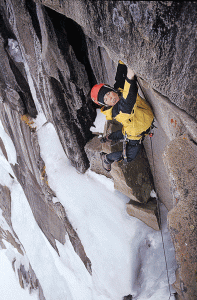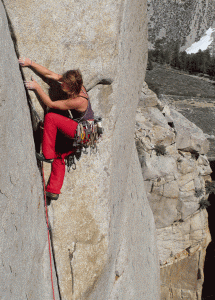A Brief History of Andy Selters
By Leonie Sherman – Photos by Andy Selters
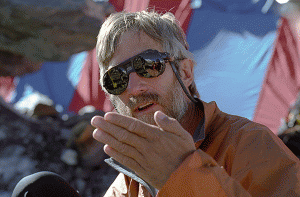
In 2004, Andy Selters made the leap from guidebook author to mountain literati. Before the publication of Ways to the Sky, Selters was known as the Shasta guy, or maybe the glacial travel guy. Afterwards he became known as the guy who redefined the way Americans view our relationship to mountains.
His history of North American mountaineering went beyond routes and dates and detailed our cultural climbing heritage in a single volume. It also won the National Outdoor Book Award and the Banff Mountain Book Festival award for history and was recently named one of the top five adventure books of all time by the Wall Street Journal.
Selters is not just a writer and a historian; he’s part of a lineage of Sierra rambler-artist-author-poets that stretches from Norman Clyde to David Brower to Yvon Chouinard. These climbers retreated from society into the Sierra Nevada and returned to share their experiences with society. The Range Of Light is not just a geographical presence in this state or indeed this country. These mountains are an economic, political and cultural force, thanks in large part to the efforts of this family of devotees.
But relatively few climbers in California have even heard of Andy Selters. Partly because he’s a pretty modest guy, and partly because many young “climbers” care more about the latest six-move variation at the climbing gym than actual mountaineering. But mostly, Selters simply hasn’t pursued fame. Rather than devote energy to self-promotion or recognition he has devoted his life, quite simply, to climbing mountains.
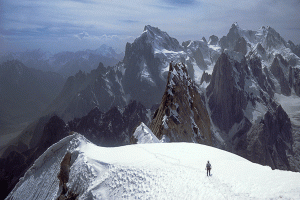
For over thirty years, Selters has been tackling hard-core climbing objectives on some of the planet’s most dramatic peaks. In 1984, on his first climbing trip to Asia, he put up a first ascent on the northwest face of 20,608 ft Great Trango in Pakistan.
“We intended to climb this other big rock wall, but the approach was way too dangerous,” Selters recalls. “So we just sort of wandered around to the base of the Great Trango and were lucky to find our way to the summit.”
Four years later he put up two new routes on Cholatse, a 21,600 ft peak in the Everest area. In addition to his Himalayan accomplishments, he’s also the author of dozens of new routes, from hard ice to technical rock, throughout the Andes, Cascades and Sierra Nevada. This summer he bagged three unclimbed peaks over 20,000 ft in a remote northeastern corner of Ladakh.
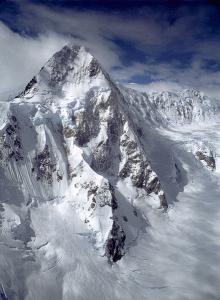
Among the mountaineering elite, Selters is famous for his epics. In 1986, he and Kitty Calhoun set out to climb 22,651 ft Thalay Sagar, on Calhoun’s first Asian expedition. “That was a crazy climb,” Selters admits, “featuring long run out pitches on thin ice.”
But two-thirds of the way to the summit, a storm hit and pinned them to their broken portaledge for a week. They waited while avalanches roared past their precariously anchored shelter and amused themselves by rationing their meager provisions. “You can definitely last a week without food,” Selters says ruefully.
Unfortunately, 25 years later, Selters faced another unplanned alpine weight-loss regime, this time with mountaineer Bill Pilling. After a successful alpine-style climb on the north buttress of 14,000 ft Mt Kennedy in Southeast Alaska, a storm trapped them on the opposite side of the mountain from their base camp. They shivered and starved for six days until the storm cleared and their legendary bush pilot, Kurt Gloyer figured out where they were. But their troubles were just beginning.
Gloyer failed to achieve the necessary velocity for take-off and nose-dived the plane into a crevasse less than a mile from the spot of Selters and Pilling’s forced bivouac. The impact killed Gloyer, knocked Pilling unconscious and broke Selters back. “Getting out from under the dead pilot, with a broken back, that was like climbing the hardest off-width ever,” Selters recalls.
Selters and Pilling spent the night on the ceiling, inside the upside down plane. Fortunately, a rescue team arrived and their painful extraction began.
Selters’ climbing career began modestly. Born and raised in Southern California, a ninth grade science trip to Yosemite Valley piqued his interest in the great outdoors. A solo ascent of Mt. Brewer four summers later whetted his appetite, but it was a winter attempt to climb Shasta while a freshman at Humboldt State that sealed the deal.
“This guy from the college outing club, Boot and Blister, invited me,” Selters recalls. “I wore jeans and hiking boots; I’d never even seen crampons before. I was just some dumb kid from LA who didn’t even have enough sense to put on a jacket when I was cold.”
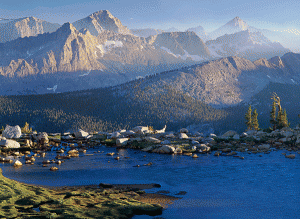
Though he failed to summit Shasta, the agony and ecstasy he experienced that winter was the start of a life-long devotion. For the next several years he spent every moment he could hiking, climbing and exploring in the Trinity Alps, the Siskiyous, Castle Crags and the sea cliffs north of Humboldt.
“This was the 1970s,” he explains. “There was no beta. Pretty much everything we climbed was a first ascent.”
While a student at Humboldt, Selters pitched a Triple Divide Peak guidebook to Wilderness Press. They turned him away; but he passed the next summer hiking every trail in the area, taking photographs and re-updating the topographic map. The summer after that he pounded out the book on a rusty typewriter while working as the caretaker at the Sierra Club hut on Mt. Shasta.
“I basically lived on saltines, peanut butter and dreams,” he recalls. “But they took the book. Book-publishing was more lucrative back then. That little five-dollar book earned me more royalties than almost anything I’ve ever written.”
For a decade after College, he took a guiding job in Bellingham with the school that would later expand into the American Alpine Institute. His physical stamina, organizational skills and willingness to live on saltines and dreams allowed him to gain high attitude climbing experience, from Denali to the Himalaya.
While Selters was working at AAI he landed book contracts from the Mountaineers and Wilderness Press and he ended up quitting his guiding job to pursue his writing ambitions. Unemployment launched his quarter century long love affair with the Sierra Nevada.
“There are few places in America that have such a great diversity of landscape as the Eastern Sierra,” Selters explains. “The opportunity to enjoy great activities all year round is why I came, but I’ve stayed because I feel at home here. I love waking up and going to bed with the Sierra and the White Mountains in view. The rhythms of seasons and going up into the mountains and coming back to a small town have become my rhythms.”
Like many mountain lovers, he has scraped by on determination and odd jobs, selling photographs, articles and books, taking the occasional roofing job and guiding gig.
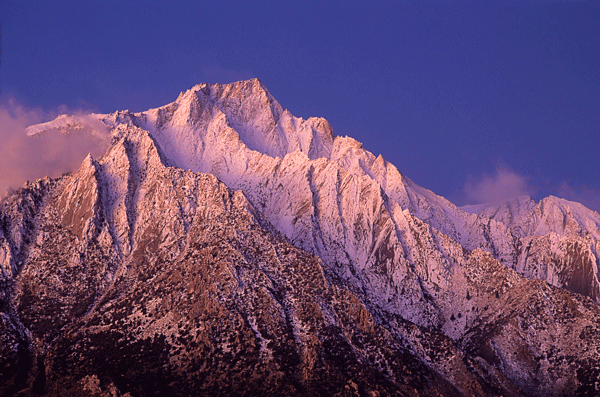
When pressed to reveal his favorites from over twenty years of Sierra ascents, Selters demurs. “I relate to the Sierra the way Peter Croft seems to. The best climb is the one you’re on, or the one you just did, or maybe the next one.” He remembers first ascents on the east face of Mt. Tyndall and the north face of Mt. Humphreys with particular glee, and endorses the mid-fifth class northeast ridge of Mt. Darwin.
With so much experience on world-class rock and ice from the Canadian Rockies to the Karakorum, Selters’ devotion to the Sierra is significant. “It’s like a world that will accommodate and host you at whatever level of curiosity you have to go up, get immersed, and come back with a sense of experiencing a higher realm,” Selters says. “The lakes to swim in don’t hurt either.”
After breaking his back in 2001, Selters swore his expedition days were over. But a decade later, when Canadian friends invited him to explore a remote area in northeastern Ladakh with them he couldn’t refuse.
“I wanted to get a glimpse, at least, into the original nature of things,” says Selters. “That’s sort of a mythical idea, but these people raise most of what they need in their own territory, they’ve been doing that for many generations. They’ve never gone to war. And they live in a magnificent mountain range; they’re not just visiting. I figured these people probably have something to teach us. And of course it’s cool to climb mountains too.”
For most of us, a first ascent on even one 20,000-plus ft peak represents the crowning achievement of a lifetime. For Selters, this most recent expedition represented a scaling back of his climbing ambitions and an opportunity to examine the collision of traditional village life and the modern world. He returned with a burning desire to share his experiences with others.
Which is another way of saying that one of his celebrated, quirky slideshows will be coming to a climbing gym near you.
Like Clyde and Brower, Selters has lived a life dedicated to mountains and people. Unlike Clyde or Brower, he has access to digital technology. Selters is not just a good writer; he puts together a mean slideshow as well. His mountain photography is world-class, and the combination of images, sounds and words create an experience not to be missed.
As this issue of ASJ goes to press, he is putting together an itinerary of presentations from his 2012 Ladakhi expedition. Check out andyselters.com for dates and locations, and some excellent photos as well.
